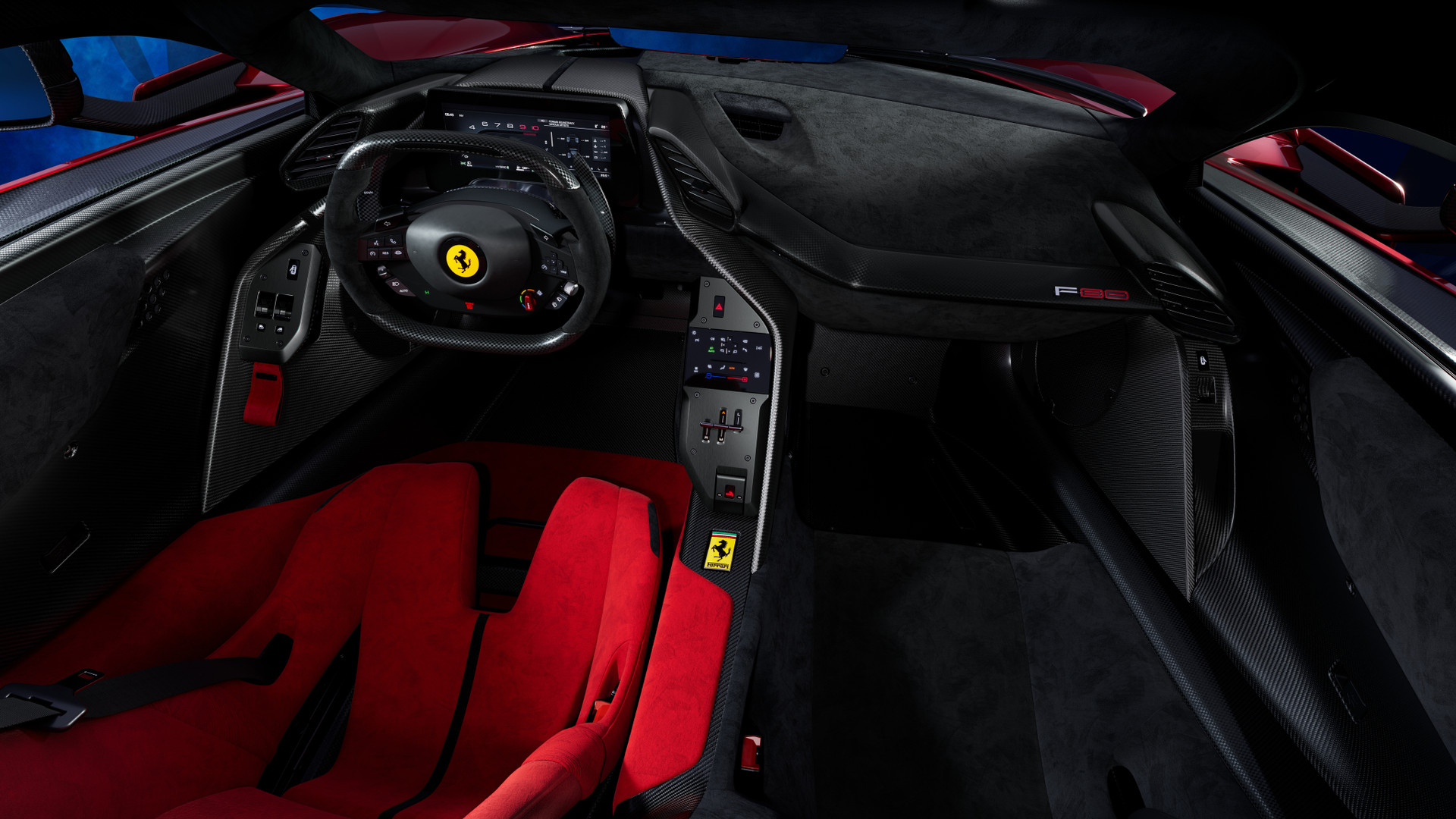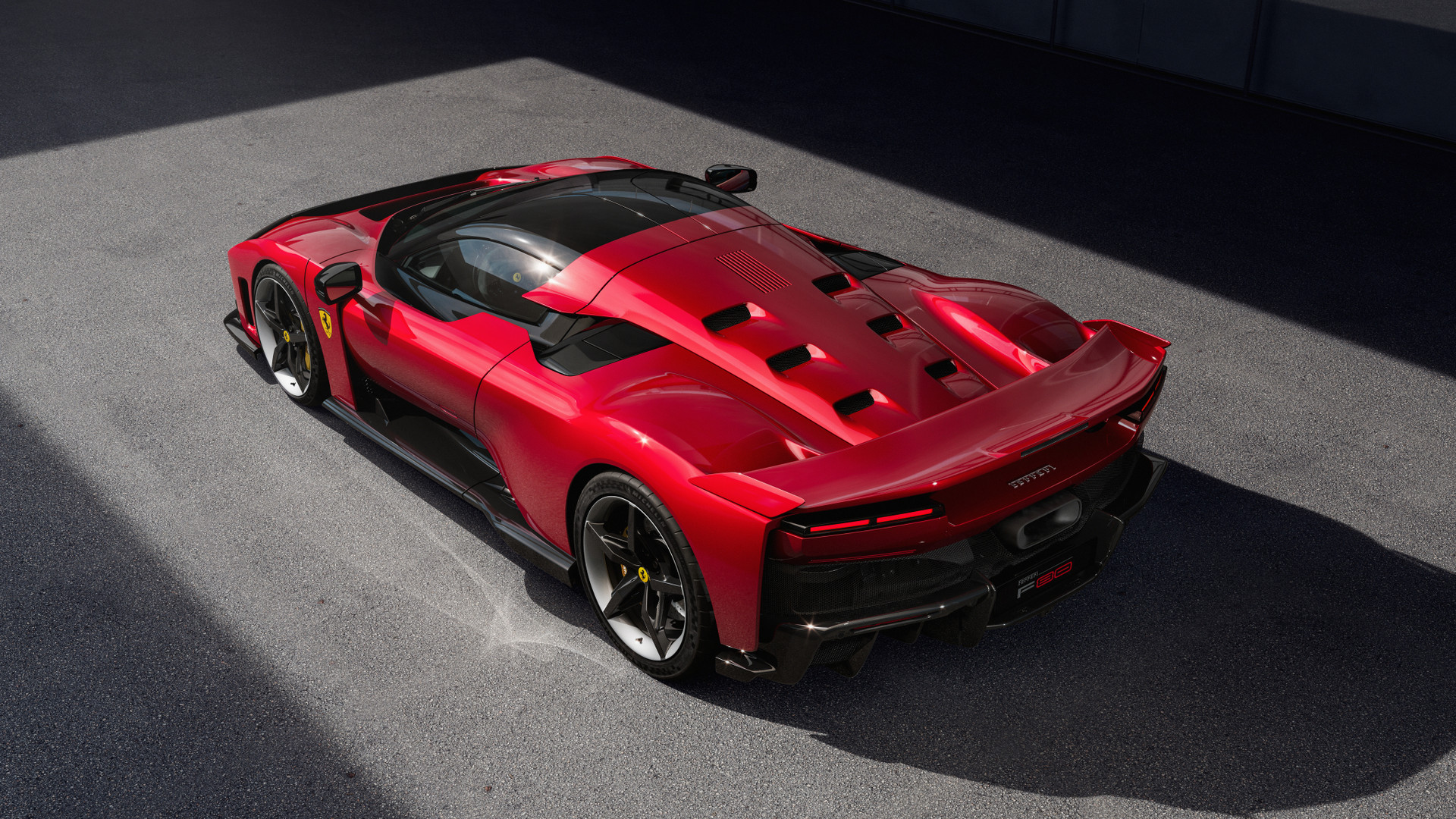Ferrari has lifted the lid on the most powerful road-going supercar it has ever built, cramming the carbon fibre-laden F80 with a three-liter twin-turbo six cylinder engine that develops 900hp on its own.
The combustion engine is then paired up with three electric motors (all developed in house) that throw an additional 300hp into the mix. That’s 1200 horses in total from a propulsion system that is essentially derived from its 499P Le Mans race car, but is equally as happy popping to the shops for a pint of milk.
Far from an attempt to reduce Ferrari’s overall carbon emissions, this is instead an exercise in extracting maximum performance. The diminutive 800V/2.3kWh battery that is stashed behind the seats, for example, uses F1 technology to ensure it can charge and discharge in the quickest and most efficient way possible.
That means customers won’t be able to drive the F80 in an all-electric mode, but will instead be able to rocket from a standstill to 62mph in 2.15 seconds, reach 124mph in just 5.75 seconds and max out at 217mph. Mind-melting stuff.

The F80 is engineered for raw performance, using a carbon-fiber chassis that is as narrow as engineers could get away with to ensure less aerodynamic drag. Inside, there’s just about enough room for the driver and one very small passenger.
Ferrari calls it a "1+" vehicle, seeing as the second seat is slightly staggered to allow the controls to envelope the driver. To highlight that this isn't some romantic grand tourer, the driver’s seat is bright red, while the poor passenger has to make do with black... and race harnesses.
There’s so much tech trickery going on underneath the spaceship-style body and butterfly wing doors that engineers from Maranello could easily fill an entire Netflix documentary series with content. The motor-controlled active suspension system, for example, negates the need for anti-roll bars and allows the vehicle to transform from hunkered down track monster to a pliant road ride with ease.
Ferrari has harnessed 3D printing technology to create the suspension wishbones, and also used copious amounts of carbon fiber for its five-spoke alloys wheels and has also introduced some serious software trickery to squeeze the most out of race circuit lap times.
Boost Optimization, which race fans can access in the two high performance driving modes (Performance and Qualify), maps warm-up laps of a favored circuit and then automatically delivers additional horsepower in the section that it deems need it most, such as when accelerating along a straight.
A technological powerhouse

The Ferrari F80 won’t actually go into production until 2025 – from then, the 799 lucky customers that are selected to receive one will have to wait until 2027 to experience it. Handily that's Ferrari’s 80th anniversary, hence the name.
It will cost around €3.6million, which is over $4million and almost AU$6million, by far the most expensive Ferrari road car ever built and up there with some of most expensive production super cars of all time.
But it moves the game on for the Italian automaker, not just in the raw figures when compared to the LaFerrari it usurps but also in the active aerodynamic technology, track-focussed features and extensive use of e-motors in everything from the turbochargers to the suspension system.
The proof is in the pudding, as the marque claims the F80 posted a new lap record of its Fiorano test track of 1min 15.3secs – that’s 4.4 seconds faster than the LaFerrari.
This might sound like marginal gains, but the numbers are huge in the cutthroat world of low-volume but hideously expensive super cars.
You might also like
from TechRadar - All the latest technology news https://ift.tt/tYGXBKc

